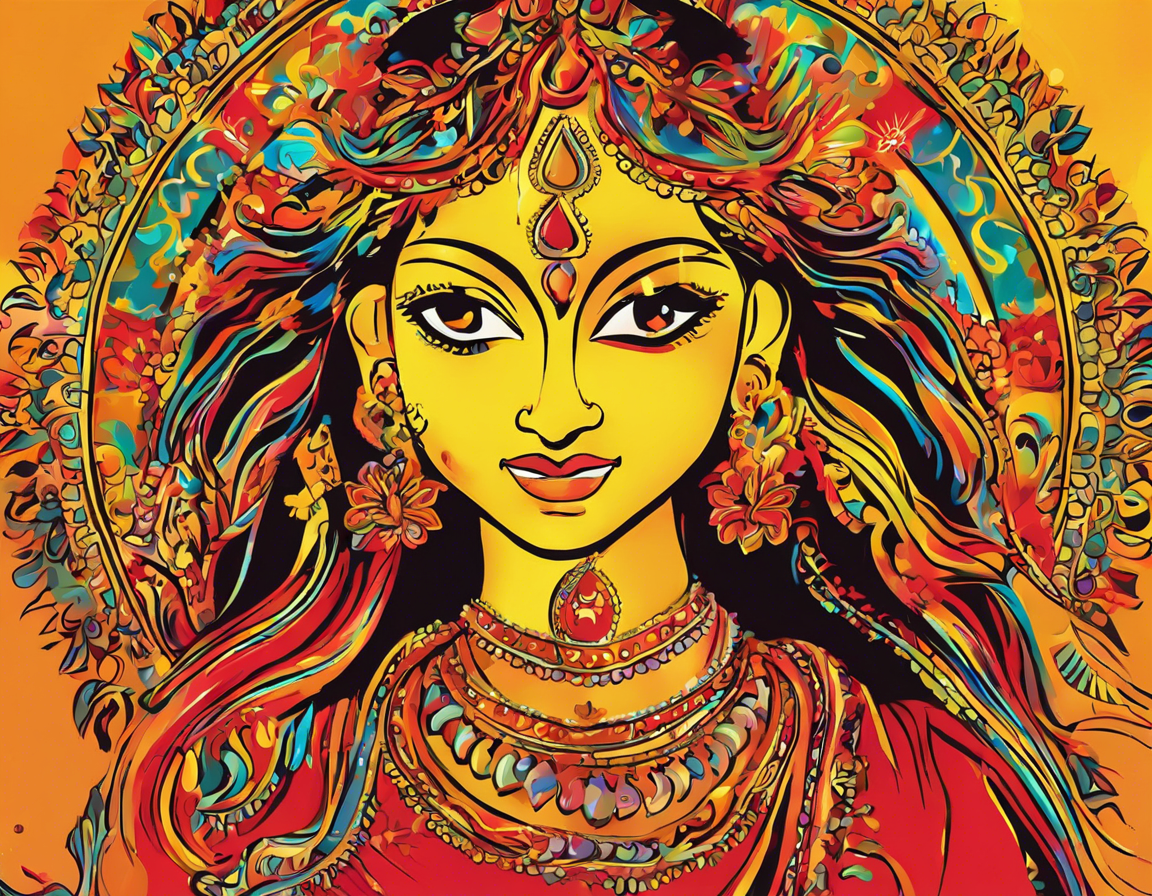
Navratri is a vibrant and colorful festival celebrated across India with great fervor and enthusiasm. This nine-night festival is dedicated to worshiping the various forms of Goddess Durga. Each day of Navratri is associated with a specific color, and devotees traditionally wear clothes of that color to symbolize the essence of that particular day. The colors of Navratri are not just symbolic; they also have deeper meanings and significance attached to them. Let’s explore the vibrant Navratri colors and delve into the spiritual and cultural relevance of each hue.
The Significance of Navratri Colors
Navratri is a celebration of the triumph of good over evil, and each color represents various aspects of this spiritual journey. The colors of Navratri are believed to have the power to evoke certain emotions and energies, aiding devotees in their prayers and meditations. Let’s unravel the symbolism behind each Navratri color:
Day 1: Yellow
The first day of Navratri is associated with the color yellow which represents brightness and optimism. Yellow symbolizes new beginnings and is meant to invoke a sense of positivity and energy. The color yellow signifies the joyous mood of the festival and marks the commencement of the nine-day celebration.
Day 2: Green
Green is the color associated with the second day of Navratri and signifies growth, harmony, and prosperity. It represents the energy of Mother Nature and the abundance of the earth. Green is believed to instill a sense of balance and rejuvenation, preparing devotees for the days ahead.
Day 3: Grey
Grey is the color for the third day of Navratri and is often associated with detachment and renunciation. Grey represents the idea of letting go of material desires and embracing a more spiritual way of life. It symbolizes a state of introspection and contemplation.
Day 4: Orange
Orange is the color of the fourth day and is symbolic of courage, excitement, and determination. It is a vibrant color that signifies the power to face challenges and overcome obstacles. Orange is believed to ignite passion and enthusiasm in devotees.
Day 5: White
White is the color associated with the fifth day of Navratri and represents purity, peace, and spirituality. White symbolizes light, goodness, and the presence of the divine. It is a color of clarity and serenity, encouraging devotees to seek inner peace and enlightenment.
Day 6: Red
On the sixth day, devotees adorn red attire, symbolizing strength, power, and action. Red is an auspicious color associated with Goddess Durga and signifies the fierce aspect of femininity. It represents the power to fight against negativity and evil forces.
Day 7: Royal Blue
Royal blue is the color of the seventh day and signifies loyalty, wisdom, and truth. It represents the infinite expanse of the sky and the depth of the ocean. Royal blue is associated with divine grace and is believed to bring spiritual awareness and clarity of thought.
Day 8: Pink
Pink is the color for the eighth day of Navratri and symbolizes love, compassion, and purity of heart. Pink represents the nurturing aspect of femininity and embodies kindness and affection. It is a color that encourages emotional healing and self-love.
Day 9: Purple
The final day of Navratri is celebrated with the color purple, which signifies luxury, power, and spirituality. Purple is a regal color that symbolizes the divine connection and higher consciousness. It is believed to evoke a sense of peace and harmony, leading devotees towards spiritual enlightenment.
FAQs about Navratri Colors
Q1: Why are specific colors associated with each day of Navratri?
A1: The colors of Navratri are based on the significance of each day and its association with particular energies and emotions. Wearing these colors is believed to enhance the spiritual experience of devotees.
Q2: Can I wear different colors during Navratri?
A2: While it is traditional to wear the specific color of each day, you can choose to incorporate elements of the designated color in your attire if wearing the exact hue is not possible.
Q3: What happens if I don’t follow the color tradition during Navratri?
A3: While wearing the designated colors adds to the festive spirit, the most important aspect of Navratri is devotion and prayer. The colors are symbolic, and the sincerity of your prayers matters the most.
Q4: Are there variations in the Navratri colors as per regional customs?
A4: Yes, the colors of Navratri may vary based on regional traditions and interpretations. Some regions may follow a different color sequence or associate unique meanings with each color.
Q5: How can I incorporate Navratri colors in my home decor or puja setup?
A5: You can decorate your home altar or puja room with items that correspond to the Navratri colors such as flowers, candles, or ribbons. This can enhance the spiritual ambiance during the festival.
In Conclusion
Navratri colors play a significant role in the spiritual and cultural fabric of this auspicious festival. Each color symbolizes unique qualities and energies that enrich the Navratri experience for devotees. By understanding the symbolism behind these vibrant hues, one can truly immerse themselves in the divine essence of Navratri and embrace its spiritual teachings. So, let the colors of Navratri guide you on a journey of self-discovery, positivity, and devotion during this joyous festival.
